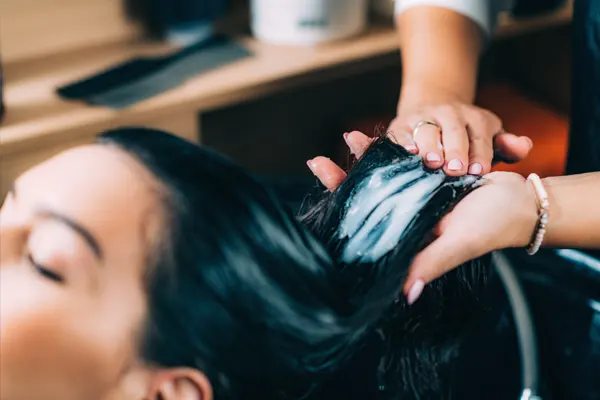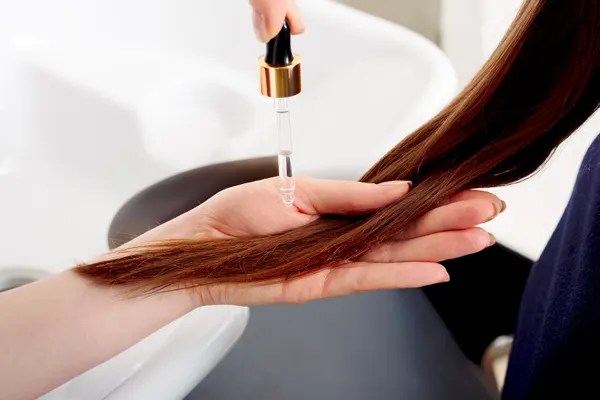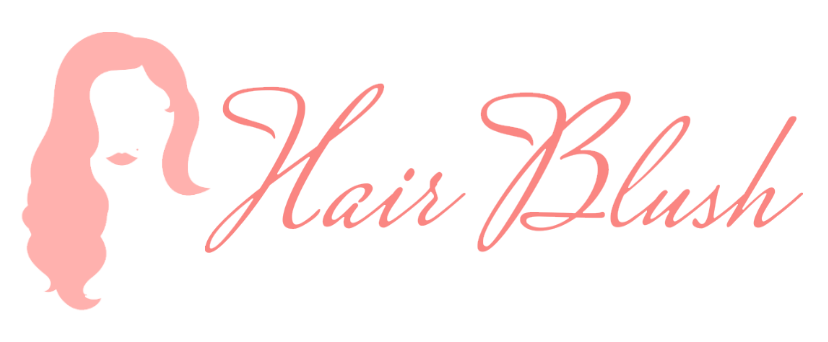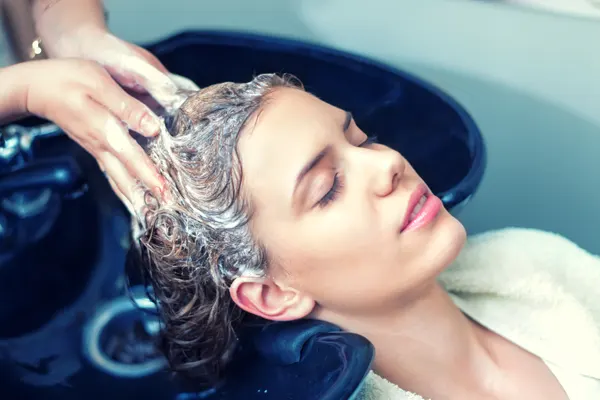A keratin treatment service can transform frizz into smoothness and cut daily styling time. However they also carry risks for certain clients.
In this guide, the stylists at our professional hair salon explain when to avoid keratin, how they assess suitability, and which gentler options deliver similar benefits without the same concerns.
Is Keratin Treatment Good for Everyone?
No, keratin treatments aren’t ideal for everyone. Each person’s hair health, texture, and goals should be considered before moving forward.
Someone with very fine strands may find the treatment makes their hair appear flat, while individuals with certain scalp sensitivities could experience irritation from the solution. Lifestyle also plays a role, since frequent swimmers or those exposed to high humidity may notice shorter-lasting effects.
A thorough consultation with a stylist helps determine if keratin aligns with your unique needs and expectations. If it does, learn what to expect before, during, and after a keratin treatment.

Who Should Avoid Keratin Treatment?
You should avoid keratin treatment services if you have:
- Active scalp or skin conditions
- Recent chemical processing
- Extremely damaged or brittle hair
- Thin, traction-weakened, or shedding-prone hair
- Pregnancy and breastfeeding concerns
- Known allergies or chemical sensitivities
Active Scalp or Skin Conditions
If you have an irritated scalp, open sores, severe dandruff, or other dermatological issues, delay keratin until a medical or dermatology professional clears you. Applying formulas to compromised skin can cause irritation and increase discomfort.
Recent Chemical Processing
If you had a chemical relaxer, bleach, or intense lightening within the last four to six weeks, skip keratin for now. Hair that is chemically fragile can break or lose elasticity when exposed to additional smoothing chemicals and heat.
Extremely Damaged or Brittle Hair
When hair shows widespread breakage, excessive porosity, or a straw-like texture, keratin can worsen breakage if the hair cannot tolerate the process. A restorative program focused on repair and strength is a safer first step.
Thin, Traction-Weakened, or Shedding-Prone Hair
If your hair is thin, or if you have suspected traction alopecia, avoid treatments that add weight or tension at the roots. Excessive tension from styling and heavier finishes can accelerate breakage at fragile areas.
Pregnancy and Breastfeeding Concerns
Some clients prefer to postpone treatments that involve strong chemical fumes during pregnancy or while breastfeeding. If you are pregnant or nursing, discuss risks with your stylist and your health care provider before proceeding.
Known Allergies or Chemical Sensitivities
If you have a history of allergic reactions to hair products or respiratory sensitivity to fumes, request a patch test and full ingredient disclosure. If any concern remains, choose a gentler alternative.
How Do You Know If You Should Get a Keratin Treatment?
Evaluate your hair history, recent services, and scalp health at a professional hair salon. Your stylist will:
- Ask about prior chemical work.
- Inspect strand elasticity and porosity.
- Perform a strand test, if necessary.
This assessment helps avoid damage and ensures the chosen service matches your hair strength. If you determine that keratin is right for you, learn how to care for your hair after a keratin treatment service.
What is a Safer Alternative to Keratin Treatment?
If keratin is not a fit, these options can reduce frizz and improve manageability with lower risk:
- Bond-repair treatments
- Intensive moisturizing and protein treatments
- Glosses and glossing treatments
- Temporary smoothing services
- Low-chemical smoothing systems
- Protective styling and cut changes
Bond-Repair Treatments
Systems that rebuild internal hair bonds can restore strength and reduce breakage. These treatments focus on repair rather than long-term straightening and work well for fragile hair.
Intensive Moisturizing & Protein Treatments
Professional masks and in-salon protocols add moisture and protein to rebalance hair structure. These services improve shine and elasticity while preparing hair for future chemical services.
Glosses & Glossing Treatments
A clear or tinted gloss adds shine, refines tone, and smooths the cuticle surface. Results last several weeks and require no heat activation in most cases.
Temporary Smoothing Services
Silk presses, blowout services, and professional flat ironing techniques offer smooth looks for days to weeks without chemical alteration of the hair’s internal structure.
Low-Chemical Smoothing Systems
Ask about formaldehyde-free smoothing options labeled for lower odor and lower fume exposure. These systems vary by brand. Discuss ingredients and aftercare with your stylist.
Protective Styling & Cut Changes
Sometimes a shape or protective style reduces daily frizz and makes hair easier to manage. A precision cut can remove damaged ends and create movement that disguises frizz.
How to Choose the Right Treatment for Your Hair
- Request a full consultation that covers hair history and goals.
- Ask for a strand test or patch test when a new chemical is proposed.
- Request full ingredient information if you have sensitivities.
- Prioritize repair and moisture if hair shows signs of fragility.
- Schedule a progressive plan that:
- Begins with strengthening services.
- Moves toward smoothing only when hair is healthy enough.

Find the Right Hair Treatment at Our Professional Hair Salon
A responsible stylist will be candid about risks and will recommend a safer alternative when needed.
At Hair Blush Salon, your stylist will explain options, show product labels on request, and craft a stepwise plan that preserves hair health while delivering the look you want.
For help deciding which option fits your hair and lifestyle, book an appointment at our professional hair salon today.

